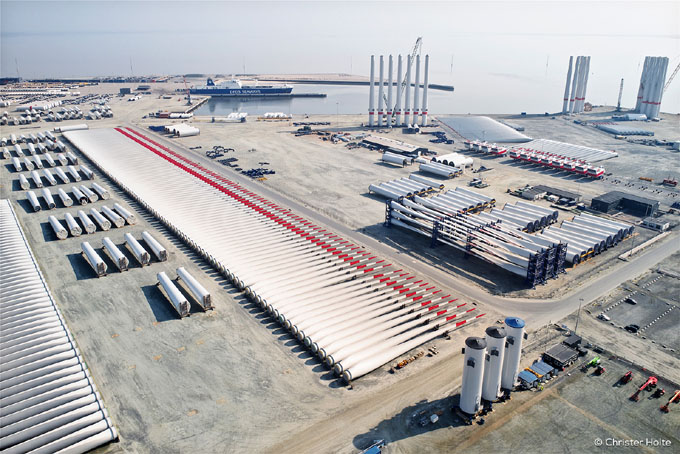
Ports are key to offshore wind development. To deliver the offshore wind expansion set out in the EU’s Offshore Renewable Energy Strategy, Europe’s ports must expand and add new infrastructure. In a new report, WindEurope estimates that €6.5bn of investment in port infrastructure will be needed by 2030. The European Commission should develop a Ports Strategy and recognise the societal and ecological value of ports.
Ports are central to offshore wind. All the turbines and equipment are transported through them. They’re the base for the operation and maintenance of offshore wind farms. They’re a magnet for much of the supply chain. And they’ll be a hub for the production and transport of renewable hydrogen from offshore wind.
Europe is embarking on a huge expansion of offshore wind. From 25 GW today to more than 400 GW by 2050. Europe cannot deliver this without huge investments in port infrastructure. In heavy-loading quaysides, deep berths, supply chain and hydrogen infrastructure - and in that crucial commodity: space. Europe needs to invest €6.5bn in its ports now just to deliver the offshore wind expansion planned for 2030, a new WindEurope report finds.
“Ports are essential for offshore wind. They’re a vital part of the supply and logistics chain that’s needed for the installation, assembly, operation and maintenance of offshore wind farms. We can’t expand offshore without also expanding and upgrading Europe’s port infrastructure”, says Giles Dickson, WindEurope CEO.
€6.5bn investment needed by 2030
WindEurope estimates that €6.5bn of investment in port infrastructure is needed to just to deliver Europe’s offshore wind targets for 2030. These investments would pay back in just five years.
The development of port infrastructure is commonly a matter for local, regional and national authorities. But given the strategic importance of ports to fulfilling the EU’s goals for offshore renewable energy, the European Commission should develop a strategy for the development of port infrastructure. And it should mobilise financial instruments to support the necessary investments.
At the same time Governments should ensure that ports are reflected in their national recovery strategies. The €673bn Recovery and Resilience Facility offers an unprecedented opportunity to make Europe’s ports fit for a green and renewable future.
Ports – hubs for offshore wind development and renewable hydrogen generation
"With growing volumes of offshore wind, ports are the perfect hubs for green energy. The offshore wind supply chain is often located in or around ports. Ports are then integrated into wider industrial ecosystems, and they will play a key role in the decarbonisation, e.g. chemicals and refineries in coastal industrial clusters - through the renewable energy for which they serve as a hub”, says Giles Dickson, WindEurope CEO.
Ports are a magnet for much of the offshore wind supply chain. Over the next decade ports will also play a key role in upscaling Europe’s renewable hydrogen infrastructure. They’re a natural location for electrolysers, and many electrolysis projects at ports are already being developed. Renewable hydrogen produced in ports can be stored locally and consumed in them local industrial ecosystem. It can also be used as a fuel for heavy-duty transport or further processed to ammonia for use in shipping.
KeyFacts Energy Industry Directory: WindEurope
 KEYFACT Energy
KEYFACT Energy